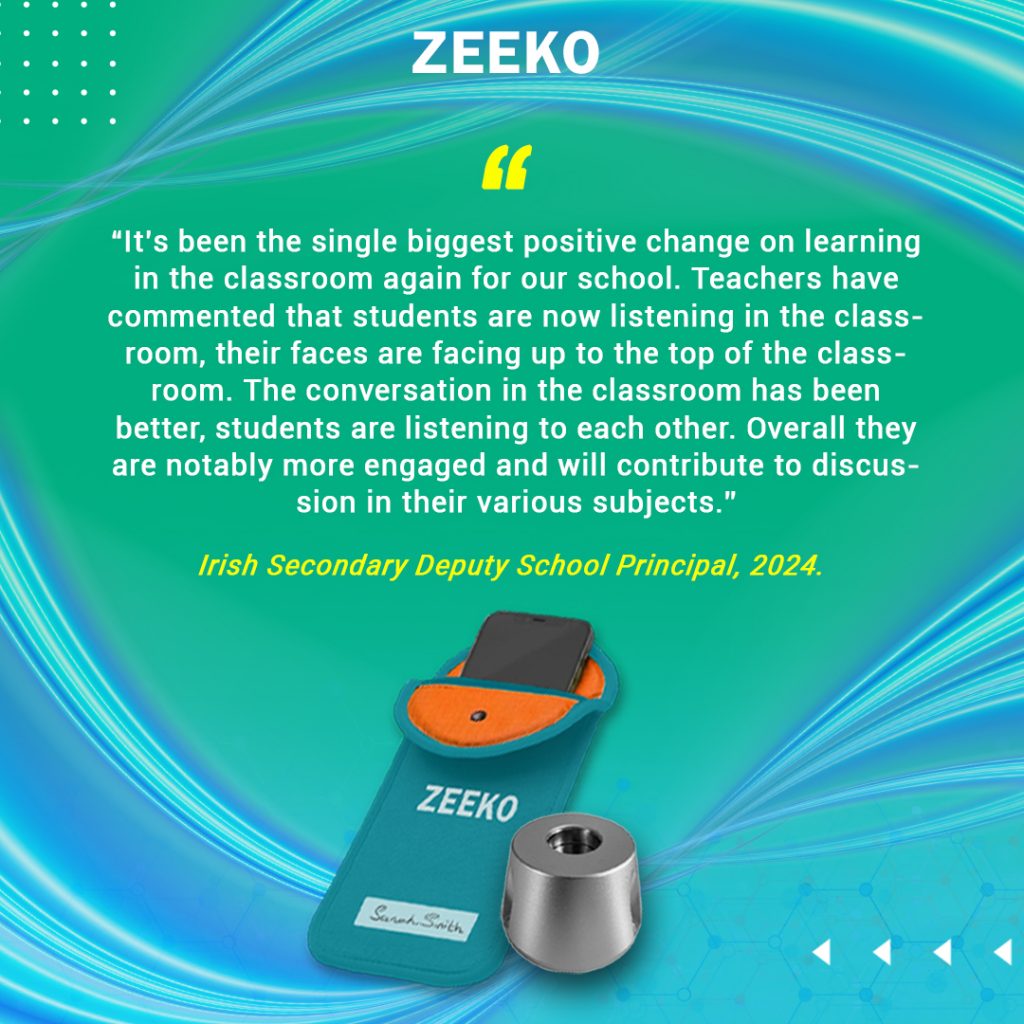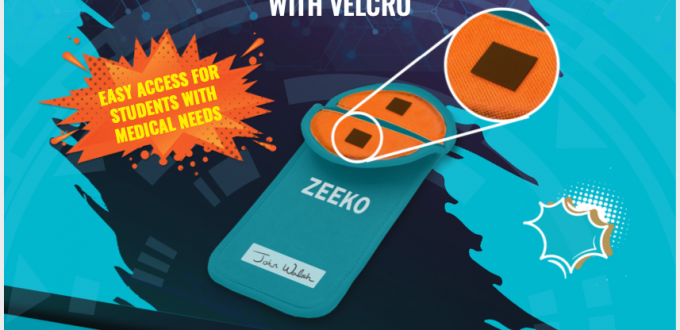An Interview with an Irish Secondary School Teacher.
The integration of technology in education has been both fortuitous and a challenge. Following the newly launched Zeeko Phone Locking System, we have made it our priority to speak to teachers across Ireland who have successfully implemented the initiative in their schools. For one Irish secondary school, the disruptive influence of smartphones led to finally implementing phone pouches. In this interview, a teacher shares their journey, challenges, and successes with this innovative approach.

Initial Decision & Motivation
Where did the idea come from?
In 2021, I came across the concept of phone pouches through an Irish Times article. Inspired by a school in Kerry using phone locking pouches, we decided to take action. After years of increasing frustration with smartphone usage, and the problem consistently being highlighted in staff meetings, we needed change. Phones were distracting students and affecting learning. Rather than banning phones outright, we decided to allow students to keep them—but in secure pouches.
What challenges prompted this decision?
Naturally, I expected resistance. First from our Principal, as they believed first that there would be too much work involved in the set-up. I took it upon myself to draft up the policy and thankfully, they then came on board. Initially, staff opinions were divided, though the majority supported the initiative. We had some resistance from parents as they feared losing direct contact with their children, while students were initially not happy at all. However, these concerns were addressed through clear communication and consistent enforcement. Within a week, many students admitted they actually preferred the new system.
The Impact of Phone Pouches
Student Learning: The phone pouches have significantly improved students’ focus and engagement. With their phones out of sight and notifications off, distractions are minimised. Group work is now enjoyable as students have no choice but to communicate directly. If they need technology for projects, laptops are still accessible, and it ensures a balance between digital and offline learning.
Student Relationships: The initiative has created stronger relationships among students and between students and staff. Before, our school clubs struggled to gain members post-COVID as students were highly addicted to their screens. Now, students are eager to participate in activities, building friendships and discovering new interests. Teachers have also noted reduced altercations in classes. The visual and physical presence of the pouches simplified enforcement for us and overall has created more space for learning.
Operational Insights
Daily Management: Surprisingly, the phone pouch system requires minimal extra effort. After a single day of adjustment, staff integrated daily checks into their routine seamlessly. A clear school policy is essential. Any violation of the policy means the phone will be confiscated and kept until the student's parent comes into the school to sign it out.
Keys to Success
- Policy First: Draft a clear, comprehensive policy before implementation.
- Consistency: Launch on the same day for all students.
- Daily Checks: Ensure pouches are monitored regularly.
- Parental Engagement: Address parental concerns through surveys and meetings to gain support.

Differentiation from Phone Bans
Why pouches over an outright ban?
A complete ban on smartphones leaves too much ambiguity. Students will claim they were only on their phones to make sure it was silent and other excuses. The temptation is too much. If they have their phones they will continue to use them regardless of a ban. The pouches eliminate grey areas. For students, the physical act of securing their phones creates a sense of accountability. For staff, it’s a simpler system to manage.
Long-Term Sustainability
Consistency is key to sustaining the initiative. Regular reinforcement of the policy ensures long-term success. Over time, the pouches have become part of our school’s culture.
Student Freedom & Parental Involvement
Freedom Through Structure: Interestingly, many students report feeling more free with the pouches. They no longer face the anxiety of constant notifications or the fear of being excluded from group chats. Instead, they have headspace to focus on meaningful friendships and engage more in their school community.
Parental Concerns: Initial resistance from parents stemmed from fears of losing contact with their children. We continue to survey from time to time, which allows us to adjust the policy if needs be. Our school provides a dedicated phone for emergencies, helping parents ease their contact anxiety and helping them trust the system. Overall we continue to demonstrate the initiative’s focus on their child’s well-being and academic achievement.
Lessons Learned
If we were to implement this initiative again, starting with a clear policy would be the top priority. Clear guidelines set expectations for all of the school community, as streamlining the process will minimise any resistance.
Broader Trends & Social Media’s Role
Over the past 15 years, social media has reshaped student interactions. While platforms like TikTok provide entertainment, I witnessed social platforms contribute to anxiety and students struggle to regulate their emotions. By limiting phone use during school hours, we’ve seen improvements in students’ mental health, for example, we have fewer students experiencing panic attacks. Encouraging face-to-face interactions has helped students develop essential social skills, benefiting both their personal and academic lives.
Final Thoughts
The phone pouch initiative is more than a policy—it’s a cultural shift. By balancing technology’s benefits with the need for focus and genuine connection, schools can create environments where students thrive. For those considering this approach, our advice is simple: start strong, stay consistent, and communicate openly with your community. Follow us on Facebook, Zeeko Education!

